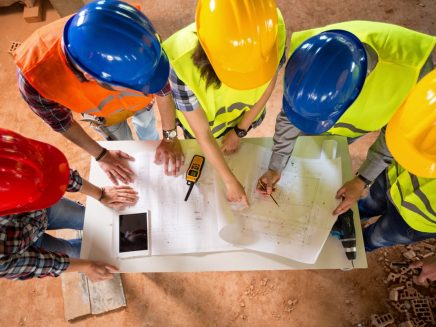Besides providing general mechanical construction, fabrication, and other services, PMI has also established itself as a specialty contractor.
Our years of experience in the field of plumbing, fabrication, corrosion control, and cleaning have enabled us to be recognized as approved specialty contractors for a diverse range of tasks.
PMI has built a world-class facility that houses clean rooms complex, blast/corrosion units, fabrication shops, and other related workshops to perform associated jobs to support and improve our services
Corrosion Control Systems
PMI has been operating sandblasting and painting facilities for corrosion control procedures since 1969. Additionally, we have also been applying specialized coating systems on-site in permitted environmentally closed facilities. Despite complete environment control, PMI intelligently manages ample cross-flow ventilation for smooth human operations.
PMI's great deal of chemical and mechanical knowledge combined with NACE-certified inspectors is why major clients like NASA, GTE, Bechtel, U.S. Airforce, and others prefer us for all specialized coating and sandblasting works.
PMI ensures full compliance with ISO standards and the client's specifications for pressure, media dryness, and velocity. Besides, PMI meets environmental requirements for the capture and disposal of lead-contaminated paints.
We employ both airless and conventional spraying equipment because it is suitable for applying inorganic and organic zinc coatings and other specialized materials.
Clean Rooms (Class 1 – 10,000)
Cleanrooms are a basic necessity in all industries where small particles can adversely affect the manufacturing process. Cleanroom facilities vary in size and complexity and are used excessively in semiconductor manufacturing, pharmaceutical manufacturing, biotech, medical device, and life sciences. Apart from that aerospace, military, and optics industry and the Department of Energy utilize clean rooms in critical process manufacturing tasks.
The cleanroom staff undergoes extensive training in contamination control theory. They enter and exit the cleanroom premises through airlocks, air showers, and gowning rooms. Plus, they must wear unique clothing inside clean rooms designed to confine contaminants that are organically formed by skin and the body.
However, the personnel gowning differs as lab coats, hairnets, or multiple layered bunny suits with self-contained breathing apparatus depending on the room classification or function.
How are clean rooms classified?
Cleanrooms are classified as per the cleanliness of the air. Cleanrooms are organized following the number and size of particles permitted per volume of air.
The prime authority in the U.S. and Canada is the ISO classification system (ISO 14644-1). This ISO standard includes these cleanroom classes:
ISO 1, ISO 2, ISO 3, ISO 4, ISO 5, ISO 6, ISO 7, ISO 8, and ISO 9.
ISO 1 is the "cleanest" room, and ISO 9 is the "dirtiest" per the standards. However, even if it's classified as the "dirtiest" class, the ISO 9 cleanroom environment is cleaner than a regular room.
Previously, the rooms were classified as per the Federal Standard 209 (FS 209E) and represented as follows:
Class 1, Class 10, Class 100, Class 1,000, Class 10,000, Class 100,000, and Class 1,000,000 (Ordinary Room).
Small numbers refer to ISO 14644-1 standard, which specifies the decimal logarithm of the number of particles 0.1 µm or larger permitted per cubic meter of air.
(Both FS 209E and ISO 14644-1 assume log-log relationships between particle size and particle concentration. For that reason, there is no zero particle concentration space).
The old Federal Standard 209E (FS 209E) was replaced in 1999 by ISO-14644-1 and withdrawn in 2001. But, it is still widely used in the industry.
PMI's facility is certified to Air Cleanliness Classification ISO 14644-1, Class 7 or "Class 10,000" as per Federal Standard 209E.

